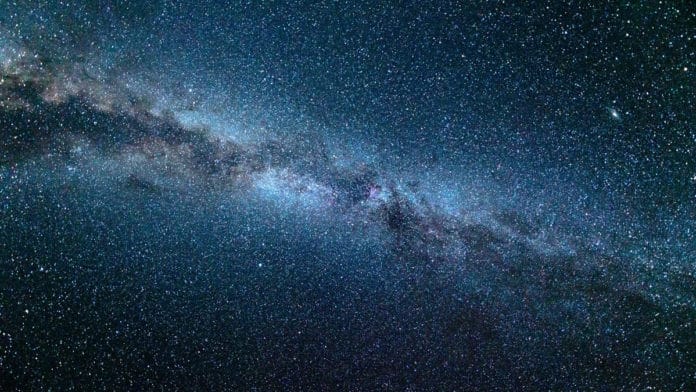Scientists from the University of Surrey have recently discovered a group of stars with different characteristics than their neighbors found in the Milky Way’s Nuclear Star Cluster (NSC). Using high-resolution computer simulations, they explained that this group of stars came to be located at the center of our galaxy.
Their calculations found that this group of stars is almost certainly leftovers from the migration of a massive star cluster that formed a few light-years away from the Milky Way‘s center. On the other hand, while not as likely as the cluster scenario, the group likewise noticed that the group of stars might have originated from a dwarf galaxy located up to 320,000 light-years from the galactic center.
All evidence points towards an accretion event that happened 3-5 billion years ago. During this event, a massive cluster migrated towards the center of the Milky Way and was disrupted by the strong tidal forces of the NSC, a region of high stellar density. Cluster stars were deposited in the region and were discovered based on their peculiar velocities and low metal content.
Dr. Alessia Gualandris, senior lecturer in physics from the University of Surrey, added: “This discovery may be the ‘smoking gun’ evidence that the Milky Way has been accreting star clusters or dwarf galaxies over its lifetime. Its past was much more active than we previously thought.”
Dr. Tuan Do, an assistant research scientist at UCLA, said: “It is remarkable how these new observations of the NSC can reveal so much about the history of the whole galaxy.”
Dr. Manuel Arca-Sedda, a Humboldt Fellow at the Astronomisches Rechen-Institut, Heidelberg, concluded: “A close collaboration between observers and theorists has been key in this study. Combining new exquisite observations with state-of-the-art computer models has allowed us to uncover the birthplace of these peculiar stars.”
Journal Reference:
- Tuan Do et al. Revealing the Formation of the Milky Way Nuclear Star Cluster via Chemo-dynamical Modeling, The Astrophysical Journal (2020). DOI: 10.3847/2041-8213/abb246
- Manuel Arca Sedda et al. On the Origin of a Rotating Metal-poor Stellar Population in the Milky Way Nuclear Cluster, The Astrophysical Journal (2020). DOI: 10.3847/2041-8213/abb245
